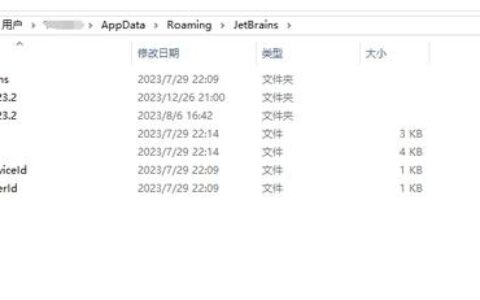计算机组成与设计第五版 答案.pdf Solutions 1 Chapter 1 Solutions S-3 1.1 Personal computer (includes workstation and laptop): Personal computers emphasize delivery of good performance to single users at low cost and usually execute third-party soft ware. Personal mobile device (PMD, includes tablets): PMDs are battery operated with wireless connectivity to the Internet and typically cost hundreds of dollars, and, like PCs, users can download soft ware (“apps”) to run on them. Unlike PCs, they no longer have a keyboard and mouse, and are more likely to rely on a touch-sensitive screen or even speech input. Server: Computer used to run large problems and usually accessed via a network. Warehouse scale computer: Th ousands of processors forming a large cluster. Supercomputer: Computer composed of hundreds to thousands of processors and terabytes of memory. Embedded computer: Computer designed to run one application or one set of related applications and integrated into a single system. 1.2 a. Performance via Pipelining b. Dependability via Redundancy c. Performance via Prediction d. Make the Common Case Fast e. Hierarchy of Memories f. Performance via Parallelism g. Design for Moore s Law h. Use Abstraction to Simplify Design 1.3 Th e program is compiled into an assembly language program, which is then assembled into a machine language program. 1.4 a. 1280 ? 1024 pixels ? 1,310,720 pixels ? 1,310,720 ? 3 ? 3,932,160 bytes/frame. b. 3,932,160 bytes ? (8 bits/byte) /100E6 bits/second ? 0.31 seconds 1.5 a. performance of P1 (instructions/sec) ? 3 ? 109/1.5 ? 2 ? 109 performance of P2 (instructions/sec) ? 2.5 ? 109/1.0 ? 2.5 ? 109 performance of P3 (instructions/sec) ? 4 ? 109/2.2 ? 1.8 ? 109 S-4 Chapter 1 Solutions b. cycles(P1) ? 10 ? 3 ? 109 ? 30 ? 109 s cycles(P2) ? 10 ? 2.5 ? 109 ? 25 ? 109 s cycles(P3) ? 10 ? 4 ? 109 ? 40 ? 109 s c. No. instructions(P1) ? 30 ? 109/1.5 ? 20 ? 109 No. instructions(P2) ? 25 ? 109/1 ? 25 ? 109 No. instructions(P3) ? 40 ? 109/2.2 ? 18.18 ? 109 CPInew ? CPIold ? 1.2, then CPI(P1) ? 1.8, CPI(P2) ? 1.2, CPI(P3) ? 2.6 f ? No. instr. ? CPI/time, then f(P1) ? 20 ? 109 ?1.8/7 ? 5.14 GHz f(P2) ? 25 ? 109 ? 1.2/7 ? 4.28 GHz f(P1) ? 18.18 ? 109 ? 2.6/7 ? 6.75 GHz 1.6 a. Class A: 105 instr. Class B: 2 ? 105 instr. Class C: 5 ? 105 instr. Class D: 2 ? 105 instr. Time ? No. instr. ? CPI/clock rate Total time P1 ? (105 ? 2 ? 105 ? 2 ? 5 ? 105 ? 3 ? 2 ? 105 ? 3)/(2.5 ? 109) ? 10.4 ? 10?4 s Total time P2 ? (105 ? 2 ? 2 ? 105 ? 2 ? 5 ? 105 ? 2 ? 2 ? 105 ? 2)/ (3 ? 109) ? 6.66 ? 10?4 s CPI(P1) ? 10.4 ? 10?4 ? 2.5 ? 109/106 ? 2.6 CPI(P2) ? 6.66 ? 10?4 ? 3 ? 109/106 ? 2.0 b. clock cycles(P1) ? 105 ? 1? 2 ? 105 ? 2 ? 5 ? 105 ? 3 ? 2 ? 105 ? 3 ? 26 ? 105 clock cycles(P2) ? 105 ? 2? 2 ? 105 ? 2 ? 5 ? 105 ? 2 ? 2 ? 105 ? 2 ? 20 ? 105 1.7 a. CPI ? Texec ? f/No. instr. Compiler A CPI ? 1.1 Compiler B CPI ? 1.25 b. fB/fA ? (No. instr.(B) ? CPI(B)/(No. instr.(A) ? CPI(A) ? 1.37 c. TA/Tnew ? 1.67 TB/Tnew ? 2.27 Chapter 1 Solutions S-5 1.8 1.8.1 C ? 2 ? DP/(V2*F) Pentium 4: C ? 3.2E8F Core i5 Ivy Bridge: C ? 2.9E8F 1.8.2 Pentium 4: 10/100 ? 10% Core i5 Ivy Bridge: 30/70 ? 42.9% 1.8.3 (Snew ? Dnew)/(Sold ? Dold) ? 0.90 Dnew ? C ? Vnew 2 ? F Sold ? Vold ? I Snew ? Vnew ? I Th erefore: Vnew ? Dnew/(C ? F)1/2 Dnew ? 0.90 ? (Sold ? Dold) ? Snew Snew ? Vnew ? (Sold/Vold) Pentium 4: Snew ? Vnew ? (10/1.25) ? Vnew ? 8 Dnew ? 0.90 ? 100 ? Vnew ? 8 ? 90 ? Vnew ? 8 Vnew ? (90 ? Vnew ? 8)/(3.2E8 ? 3.6E9)1/2 Vnew ? 0.85 V Core i5: Snew ? Vnew ? (30/0.9) ? Vnew ? 33.3 Dnew ? 0.90 ? 70 ? Vnew ? 33.3 ? 63 ? Vnew ? 33.3 Vnew ? (63 ? Vnew ? 33.3)/(2.9E8 ? 3.4E9)1/2 Vnew ? 0.64 V 1.9 1.9.1 p# arith inst.# L/S inst. # branch inst.cyclesex. timespeedup 12.56E91.28E92.56E87.94E1039.71 21.83E99.14E82.56E85.67E1028.31.4 49.12E84.57E82.56E82.83E1014.22.8 84.57E82.29E82.56E81.42E107.105.6 S-6 Chapter 1 Solutions 1.9.2 pex. time 141.0 229.3 414.6 87.33 1.9.3 3 1.10 1.10.1 die area15cm ? wafer area/dies per wafer ? pi*7.52 / 84 ? 2.10 cm2 yield15cm ? 1/(1?(0.020*2.10/2)2 ? 0.9593 die area20cm ? wafer area/dies per wafer ? pi*102/100 ? 3.14 cm2 yield20cm ? 1/(1?(0.031*3.14/2)2 ? 0.9093 1.10.2 cost/die15cm ? 12/(84*0.9593) ? 0.1489 cost/die20cm ? 15/(100*0.9093) ? 0.1650 1.10.3 die area15cm ? wafer area/dies per wafer ? pi*7.52/(84*1.1) ? 1.91 cm2 yield15cm ? 1/(1 ? (0.020*1.15*1.91/2)2 ? 0.9575 die area20cm ? wafer area/dies per wafer ? pi*102/(100*1.1) ? 2.86 cm2 yield20cm ? 1/(1 ? (0.03*1.15*2.86/2)2 ? 0.9082 1.10.4 defects per area0.92 ? (1y.5)/(y.5*die_area/2) ? (1?0.92.5)/ (0.92.5*2/2) ? 0.043 defects/cm2 defects per area0.95 ? (1y.5)/(y.5*die_area/2) ? (1?0.95.5)/ (0.95.5*2/2) ? 0.026 defects/cm2 1.11 1.11.1 CPI ? clock rate ? CPU time/instr. count clock rate ? 1/cycle time ? 3 GHz CPI(bzip2) ? 3 ? 109 ? 750/(2389 ? 109)? 0.94 1.11.2 SPEC ratio ? ref. time/execution time SPEC ratio(bzip2) ? 9650/750 ? 12.86 1.11.3. CPU time ? No. instr. ? CPI/clock rate If CPI and clock rate do not change, the CPU time increase is equal to the increase in the of number of instructions, that is 10%. Chapter 1 Solutions S-7 1.11.4 CPU time(before) ? No. instr. ? CPI/clock rate CPU time(aft er) ? 1.1 ? No. instr. ? 1.05 ? CPI/clock rate CPU time(aft er)/CPU time(before) ? 1.1 ? 1.05 ?1.155. Th us, CPU time is increased by 15.5%. 1.11.5 SPECratio ? reference time/CPU time SPECratio(aft er)/SPECratio(before) ? CPU time(before)/CPU time(aft er) ? 1/1.1555 ? 0.86. Th e SPECratio is decreased by 14%. 1.11.6 CPI ? (CPU time ? clock rate)/No. instr. CPI ? 700 ? 4 ? 109/(0.85 ? 2389 ? 109) ? 1.37 1.11.7 Clock rate ratio ? 4 GHz/3 GHz ? 1.33 CPI 4 GHz ? 1.37, CPI 3 GHz ? 0.94, ratio ? 1.45 Th ey are diff erent because, although the number of instructions has been reduced by 15%, the CPU time has been reduced by a lower percentage. 1.11.8 700/750 ? 0.933. CPU time reduction: 6.7% 1.11.9 No. instr. ? CPU time ? clock rate/CPI No. instr. ? 960 ? 0.9 ? 4 ? 109/1.61 ? 2146 ? 109 1.11.10 Clock rate ? No. instr. ? CPI/CPU time. Clock ratenew ? No. instr. ? CPI/0.9 ? CPU time ? 1/0.9 clock rateold ? 3.33 GHz 1.11.11 Clock rate ? No. instr. ? CPI/CPU time. Clock ratenew ? No. instr. ? 0.85? CPI/0.80 CPU time ? 0.85/0.80, clock rateold ? 3.18 GHz 1.12 1.12.1 T(P1) ? 5 ? 109 ? 0.9 / (4 ? 109) ? 1.125 s T(P2) ? 109 ? 0.75 / (3 ? 109) ? 0.25 s clock rate (P1) ? clock rate(P2), performance(P1) performance(P2) 1.12.2 T(P1) ? No. instr. ? CPI/clock rate T(P1) ? 2.25 3 1021 s T(P2) 5 N ? 0.75/(3 ? 109), then N ? 9 ? 108 1.12.3 MIPS ? Clock rate ? 10?6/CPI MIPS(P1) ? 4 ? 109 ? 10?6/0.9 ? 4.44 ? 103 S-8 Chapter 1 Solutions MIPS(P2) ? 3 ? 109 ? 10?6/0.75 ? 4.0 ? 103 MIPS(P1) ? MIPS(P2), performance(P1) ? performance(P2) (from 11a) 1.12.4 MFLOPS ? No. FP operations ? 10?6/T MFLOPS(P1) ? .4 ? 5E9 ? 1E-6/1.125 ? 1.78E3 MFLOPS(P2) ? .4 ? 1E9 ? 1E-6/.25 ? 1.60E3 MFLOPS(P1) ? MFLOPS(P2), performance(P1) ? performance(P2) (from 11a) 1.13 1.13.1 Tfp ? 70 ? 0.8 ? 56 s. Tnew ? 56?85?55?40 ? 236 s. Reduction: 5.6% 1.13.2 Tnew ? 250 ? 0.8 ? 200 s, Tfp?Tl/s?Tbranch ? 165 s, Tint ? 35 s. Reduction time INT: 58.8% 1.13.3 Tnew ? 250 ? 0.8 ? 200 s, Tfp?Tint?Tl/s ? 210 s. NO 1.14 1.14.1 Clock cycles ? CPIfp ? No. FP instr. ? CPIint ? No. INT instr. ? CPIl/s ? No. L/S instr. ? CPIbranch ? No. branch instr. TCPU ? clock cycles/clock rate ? clock cycles/2 ? 109 clock cycles ? 512 ? 106; TCPU ? 0.256 s To have the number of clock cycles by improving the CPI of FP instructions: CPIimproved fp ? No. FP instr. ? CPIint ? No. INT instr. ? CPIl/s ? No. L/S instr. ? CPIbranch ? No. branch instr. ? clock cycles/2 CPIimproved fp ? (clock cycles/2 ? (CPIint ? No. INT instr. ? CPIl/s ? No. L/S instr. ? CPIbranch ? No. branch instr.) / No. FP instr. CPIimproved fp ? (256?462)/50 ?0 ? not possible 1.14.2 Using the clock cycle data from a. To have the number of clock cycles improving the CPI of L/S instructions: CPIfp ? No. FP instr. ? CPIint ? No.
2024最新激活全家桶教程,稳定运行到2099年,请移步至置顶文章:https://sigusoft.com/99576.html
版权声明:本文内容由互联网用户自发贡献,该文观点仅代表作者本人。本站仅提供信息存储空间服务,不拥有所有权,不承担相关法律责任。如发现本站有涉嫌侵权/违法违规的内容, 请联系我们举报,一经查实,本站将立刻删除。 文章由激活谷谷主-小谷整理,转载请注明出处:https://sigusoft.com/58695.html




![Rider激活2024.1.2([分享]MAS_AIO_2.6目前还能数字激活的最新中文版【2024.4.21更新】)缩略图 Rider激活2024.1.2([分享]MAS_AIO_2.6目前还能数字激活的最新中文版【2024.4.21更新】)](https://sigusoft.com/wp-content/uploads/2024/06/3oa4637m6e-480x300.png)





